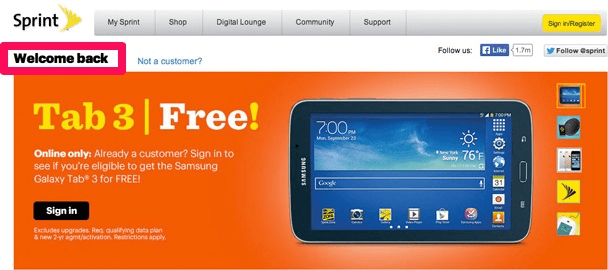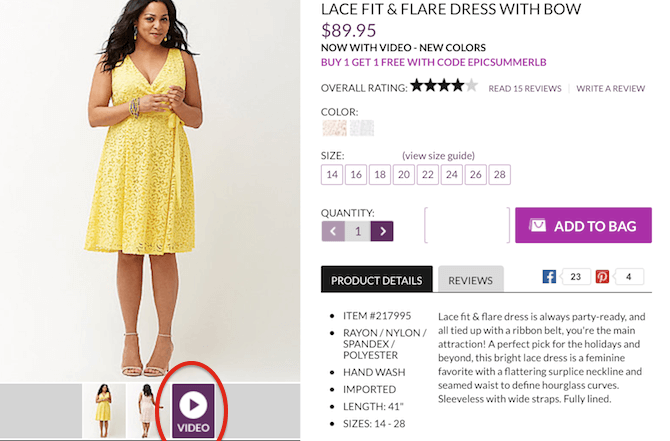The ecommerce market is an extremely competitive industry; hence, businesses always aim to follow creative ways to increase their sales and the number of satisfied customers.
Online customers not only expect personalization on ecommerce websites but are also willing to share their experience and personal data for a personalized and enhanced shopping experience.
As an ecommerce brand, you may have encountered many visitors that may stay on your website for a few seconds but later bounce away without really making any purchase or leaving any trace.
A study by tandfonline revealed that It only takes about 0.05 seconds for visitors to decide whether they like your e-commerce site enough to stay or bounce away. The attention span of internet users has only gone down since then.
Today, for almost every major ecommerce brand, a high bounce rate is one of the most common growth killers.
To reduce high bounce rates, among the many digital marketing tactics, ecommerce personalization stands out as a powerful solution. According to a prediction by Gartner, there would be a 15% profit boost for those who successfully manage data and personalization in ecommerce.
In this blog, let us take a closer look at what the bounce rate in ecommerce is, the reasons why the bounce rate is so high on ecommerce websites, how it affects ecommerce businesses, and what data and personalization techniques can help in reducing the bounce rate.
What is Bounce Rate?
Bounce rate in ecommerce is like window shopping in a mall – it measures the percentage of visitors who check out the display but leave without stepping inside the store. In simpler terms, it’s the online window-shopper count. The lower, the better, as you want visitors buying from your stores and not just peering through the window.
To determine your bounce rate, you can use this formula:

A higher bounce rate indicates that your website was unable to convince the visitor to stay and act on your CTA to buy your product.
Why do ecommerce websites experience high bounce rates?
Many reasons can cause a high bounce rate for your ecommerce store. Some of the common reasons are:
- Difficult site navigation
- Not user-friendly website layout
- Very few relevant web pages
- Non-engaging web content
- Not optimized for mobile and other devices
- No compelling CTA on products
- Lengthy load time for landing pages
- Complex UX and UI
- Too many interfering ads and popups
Failing to make an impression on the users visiting a product page can make them leave without making a purchase. A higher bounce rate on a website can affect and worsen its search engine ranking, hence affecting the ecommerce business overall.
How does personalizing the ecommerce experience help?
Enhancing the ecommerce experience for individualized interactions and personalized experience for customers plays a great role in reducing bounce rates.
Personalization can be achieved in several ways. Dynamically browsing the user’s search history for displaying the contents, media, recommending a product, and more based on their cache demographics.
To incorporate personalization techniques in their marketing strategy, ecommerce corporations focus on exclusive factors such as website content, advanced automation techniques, AI, and analysis techniques.
Furthermore, a study behind ecommerce personalization by Infosys speaks for itself:
- 59% of shoppers say that personalization influences their shopping decisions.
- 31% of customers would like their shopping experience to be more personalized than it actually is.
- 74% of customers feel frustrated when website content is not personalized.
Calculate how much money you are leaving on the table with our
Web Personalization ROI Calculator
What are the most effective data-based personalization techniques to reduce bounce rate?
1. Personalized homepage
It is important to start personalization with your homepage. You can build a personalized homepage by dynamically changing its appearance and contents to match the type of visitor to your website.
There are two types of visitors:
New – You need to make your new visitors feel welcome. They need to get informed and acquainted with your website as fast and efficiently as possible. Complex navigation could potentially drive away new visitors since they’re not familiar with navigating your site. Keep your interface user-friendly enough for new visitors to know where to go next.
Returning – Thank the returning visitors for revisiting your website. They will be thrilled and will feel valued if you recognize them. You can also offer them a reward or coupon as a token of appreciation.
For example, Sprint displays an exclusive offer for their returning visitors.

2. Plan a consistent content strategy
It is recommended that you experiment with different content strategies to run a successful ecommerce website.
On the other hand, marketing experts also ask you to build and run your website on a consistent content plan. So how can we achieve both of these at the same time? Indeed, you can.
Many successful ecommerce websites make use of both of these content strategies to enhance their user experience. If you want your visitors to stay on your page longer, then you need to have an adaptive content strategy and run your website on a content plan that best engages your type of audience.
For example, Barilliance keeps track of its users’ location and changes the type of content in action accordingly.
On sunny days, this ecommerce store shows a summer outfit.

But when the weather shifts in the user’s location, the category page image actually changes.

3. Display dynamic content
To run a successful ecommerce store, you need to have a great understanding of every visitor coming to your website. To start with personalization, keep in mind every visitor has a different persona and intentions for visiting.
It is highly advised by marketing experts not to display the same content and messages to different types of visitors. Not every visitor can relate to the same displayed content; hence, it will not stir your visitors’ interest.
Your content must adapt your visitors’ persona, interests, and likings. For example, to offer a coupon code to a new visitor, you can personalize the CTA text of your popup based on what the visitor is currently browsing.
A great example is how Zalora dynamically used data and personalization to change the CTA of its discount offers. A visitor browsing men’s t-shirts gets a pop-up with a discount offer on men’s shirts too.

4. Use high-quality images
Images are a useful content tool to grab users’ attention.
Image contents are widely used on an ecommerce website to reduce the bounce rate.
Many websites use high-quality creatives and photographs as their full-screen backgrounds because they have proven to be very useful.
You can use high-quality images on your website as background sliders, full-screen backgrounds, parallax backgrounds, and even inline images next to your CTA buttons.
For example, the online clothing store Olive Ave, uses a variety of highly quality shots to showcase their product.

5. Use Videos Contents to Engage Visitors
Videos don’t just grab user attention; they hold it.
According to MistMedia, 88% of visitors stay longer on a website that has a prominent video displayed. Plus, those who stay longer are 64% more likely to make a purchase.
Video content has so many different forms of persuasion tools, such as animated, review, guide, ad, brand aesthetic content, and more. Many successful ecommerce stores make use of video content on their home screen and add a CTA button next to it.
For example, Lane Bryant has put a video showing what the clothes look like while in motion.

6. Exit-intent triggers
When a visitor is about to leave your website, an exit-intent offer can be displayed to create a trigger that can help you seize your visitor’s attention momentarily and stop them from bouncing away.
Good customer experience can be boosted by displaying the right kind of content, at the right time to the right type of visitor. The exit-intent trigger content has to be real-time and personalized.
Some technologies help you automatically create an exit-intent trigger, such as a limited-time discount offer that could pop up for a particular visitor right before they leave your ecommerce store. Businesses can also use exit-intent triggers to capture visitor details such as email addresses.
Here’s an example from minimum that focuses on getting leads:

Final Thoughts
A growing bounce rate is one of the many difficulties shared by various ecommerce business owners. It is demotivating to see a potential customer visit your website but then leave without converting into sales.
Though, as we mentioned above, there are many reasons for a high bounce rate, the key to overcoming it is to understand your customers’ purposes of visiting your website. This is only when you can create an engaging customer experience through personalization.
Follow these remarkable data and personalization tips mentioned above to not only lower your bounce rates but also to enhance your business profits. Dropping the bounce rate guarantees better customer engagement with your ecommerce stores.







